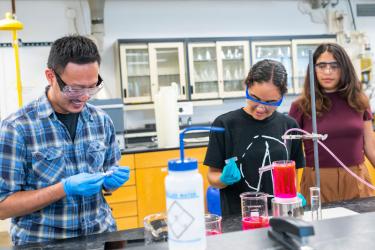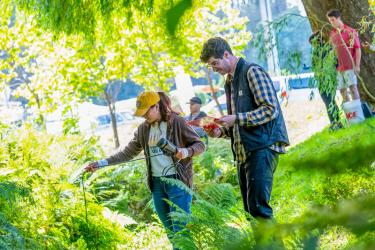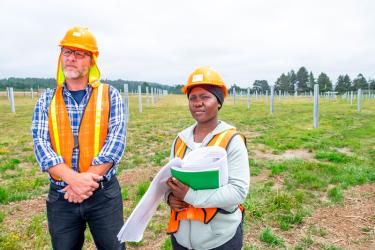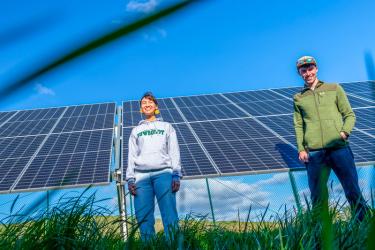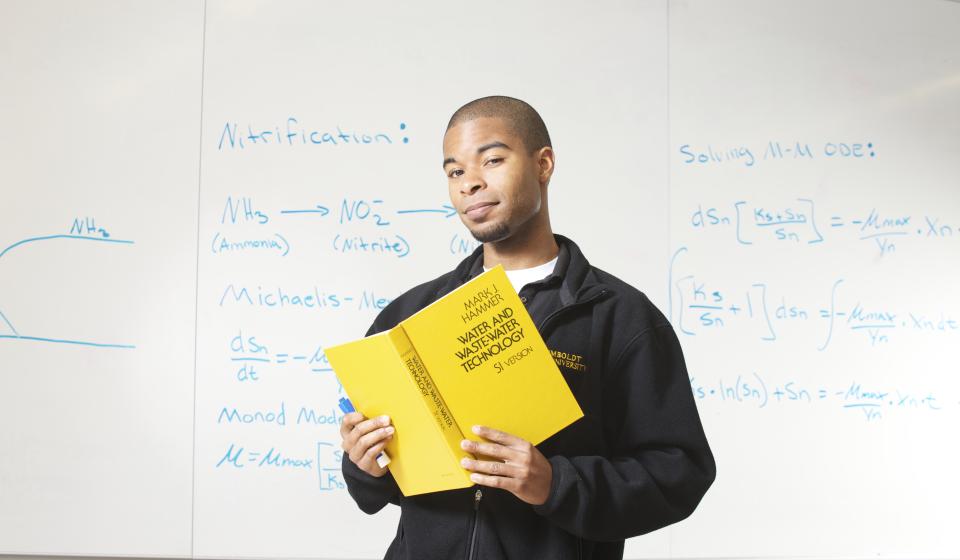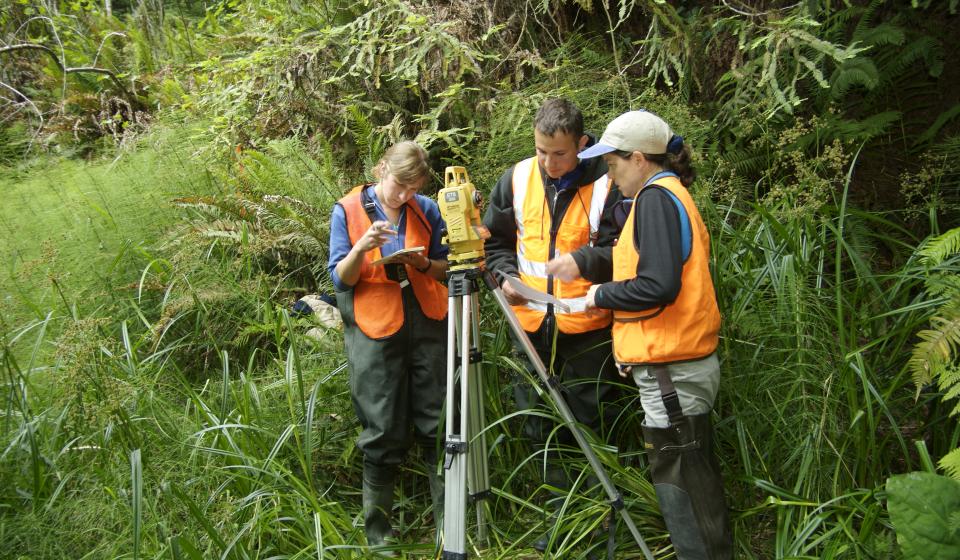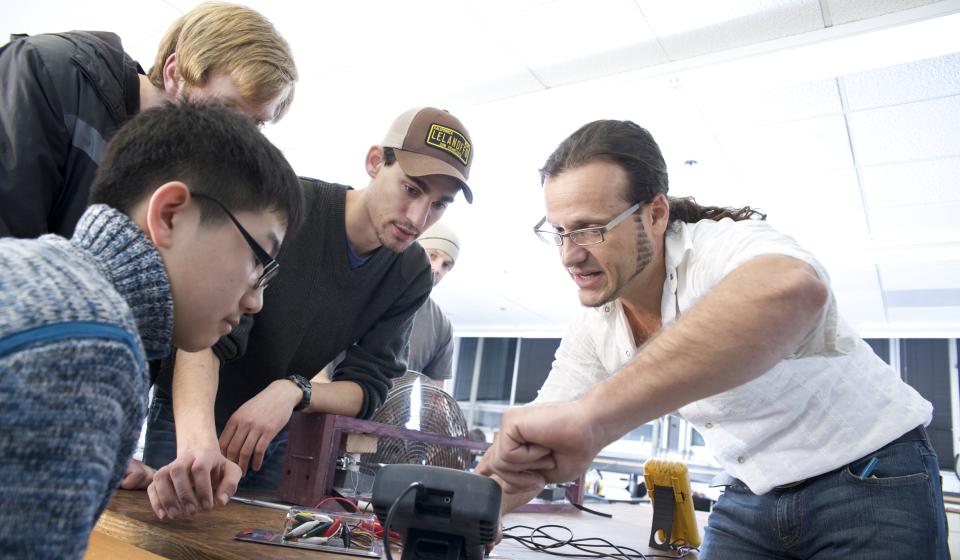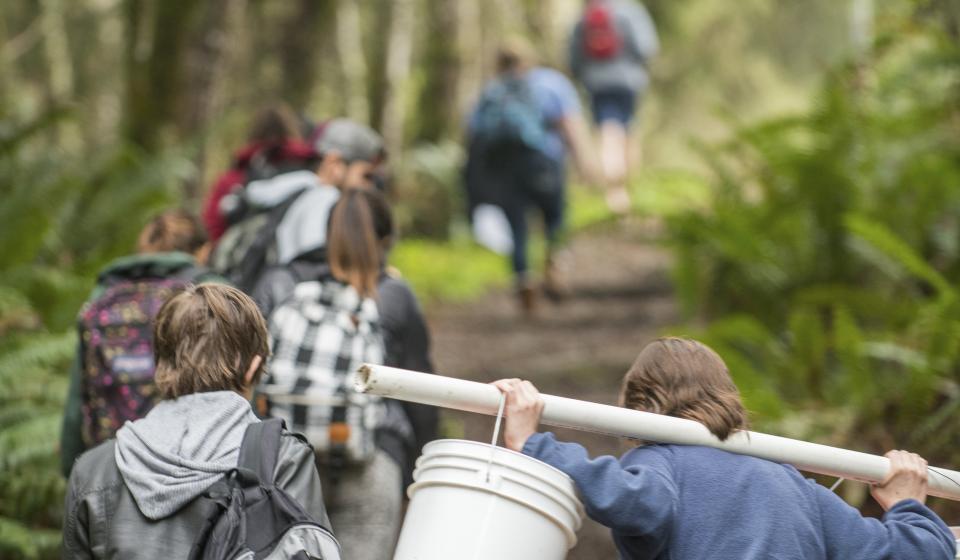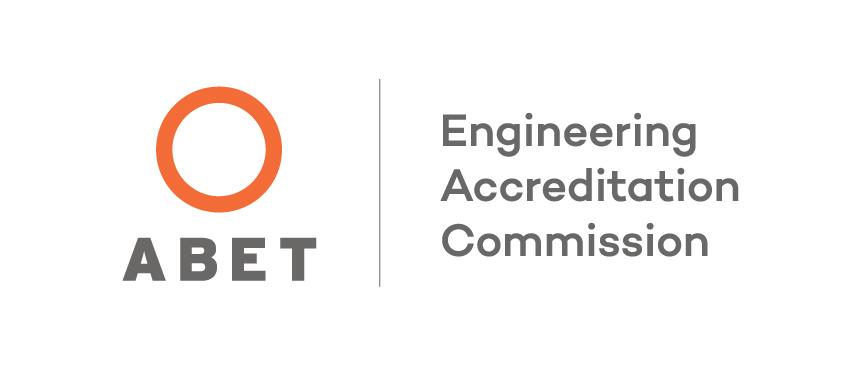Undergraduate Research
Schatz Energy Research Center (SERC)
 SERC was established in 1989 thanks to a generous endowment from Dr. Louis W. Schatz, president of General Plastics Manufacturing Company of Tacoma, Washington. SERC's mission is to promote the use of clean and renewable energy in our society. The Center has a broad portfolio of domestic and international related to renewable energy and energy efficiency. Active research projects include work related to solar energy, hydrogen, and fuel cells, biomass energy, clean transportation, local renewable energy utilization, and energy access for low-income people in developing countries. SERC is housed in a 6600-square-foot purpose-built facility on the Humboldt campus
SERC was established in 1989 thanks to a generous endowment from Dr. Louis W. Schatz, president of General Plastics Manufacturing Company of Tacoma, Washington. SERC's mission is to promote the use of clean and renewable energy in our society. The Center has a broad portfolio of domestic and international related to renewable energy and energy efficiency. Active research projects include work related to solar energy, hydrogen, and fuel cells, biomass energy, clean transportation, local renewable energy utilization, and energy access for low-income people in developing countries. SERC is housed in a 6600-square-foot purpose-built facility on the Humboldt campus
Arcata Marsh and Wildlife Sanctuary

The Arcata Marsh and Wildlife Sanctuary is one of the first in the nation to use constructed wetlands for urban wastewater treatment. Many ERE students have been involved in research projects at the marsh. The current activities are focused on understanding the cycling of nitrogen through the treatment system and possible treatment processes that could be used to reduce the ammonia and total nitrogen concentration of the effluent. In addition, work continues on helping to identify operational strategies for the treatment of marshes that will improve their solids and BOD removal efficiencies. Find more information about the marsh here.
Watershed Restoration and Aquatic Organism Passage
Faculty and students in the Humboldt Environmental Resources Engineering program are examining the ability of aquatic organisms to move upstream through culverts and other common stream barriers. This research includes the design of fish passage structures using mathematical modeling, physical modeling with a hydraulic flume, and field monitoring of prototype structures. The College of Natural Resources and Science's sediment transport flume is being used by ERE students and faculty to evaluate the effectiveness of these structures under various bedload transport conditions. The knowledge gained from these projects improves the design of the culverts, grade control structures, and small dams, and influences the engineering design of river restoration projects.
Use of Tire Derived Aggregate (TDA) for Wastewater and Stormwater Treatment
 This research effort is examing the use of TDA as a medium in wastewater and stormwater treatment systems, and developing design guidelines for these treatment systems in the state of California. TDA has a higher surface area to volume ratio compared to rock aggregate, resulting in greater biofilm activity and subsequent removal or transformation of undesirable constituents in the water. The research is also quantifying the rate of leachate from steel in the tire bead and belt and from the rubber compound itself.
This research effort is examing the use of TDA as a medium in wastewater and stormwater treatment systems, and developing design guidelines for these treatment systems in the state of California. TDA has a higher surface area to volume ratio compared to rock aggregate, resulting in greater biofilm activity and subsequent removal or transformation of undesirable constituents in the water. The research is also quantifying the rate of leachate from steel in the tire bead and belt and from the rubber compound itself.
Campus Center for Appropriate Technology
ERE students and faculty created a student-run demonstration home for appropriate technologies on the Humboldt campus. Some examples of ERE student projects include designing and implementing a gray-water treatment system and a composting toilet.
Thermochemical Recuperation and Hydrogen Enriched Combustion
Combustion of typical fuels leads to the destruction of between 16-40% of the work potential also called energy. Research projects are investigating the use of endothermic chemical combustion processes. This technology has the potential to allow the use of renewable feedstocks from plants or from waste streams to offset up to 50% of the fossil fuel used in power plant engines or gas turbines, reduce NOx emissions by up to 95%, and increase efficiency by 20%.

